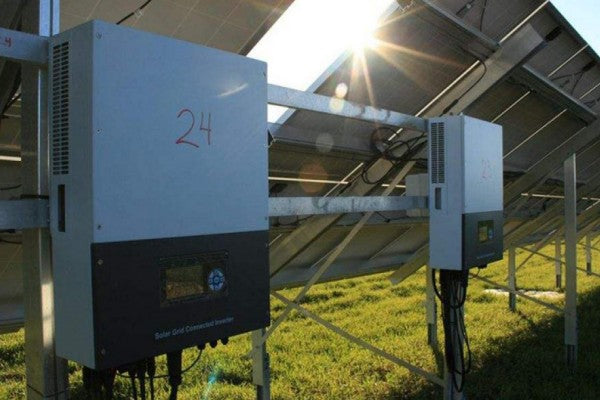
Are you ready to harness the power of the sun for your outdoor escapades? Solar energy has revolutionized the way we power our lives, from homes to gadgets and even outdoor equipment. If you're planning to venture into the world of solar energy and need the best solar battery for your solar-powered adventures, you've come to the right place! In this comprehensive guide, we'll walk you through everything you need to know to make an informed decision and ensure a seamless solar experience.
Understanding Solar Batteries
Before we delve into the nitty-gritty of choosing the perfect solar battery, let's get familiar with what a solar battery is and how it works. A solar battery is a crucial component of any solar energy system, storing the excess energy generated by your solar panels during sunny days for use during cloudy spells or at night.
Solar batteries come in various types, including lead-acid, lithium-ion, and saltwater batteries. Each type has its own advantages and considerations, so let's explore them in detail.
1. Lead-Acid Solar Batteries
Lead-acid solar batteries have been around for decades and are well-known for their reliability and affordability. These batteries are available in two primary variants: flooded lead-acid and sealed lead-acid (AGM and Gel).
The flooded lead-acid batteries require regular maintenance and are not suitable for indoor use due to their venting requirements. On the other hand, AGM and Gel lead-acid batteries are maintenance-free and safer to use indoors. They are ideal for RVs, cabins, and off-grid solar applications.
2. Lithium-ion Solar Batteries
Lithium-ion solar batteries have gained immense popularity in recent years, and for good reason. They offer higher energy density, longer lifespan, and a lighter weight compared to lead-acid batteries. These qualities make them perfect for portable solar applications such as camping and hiking.
While lithium-ion batteries may have a higher upfront cost, their long-term performance and reduced maintenance expenses make them a smart investment for those seeking reliable, hassle-free power.
3. Saltwater Solar Batteries
Saltwater batteries are the eco-friendly option for solar enthusiasts who prioritize sustainability. These batteries use saltwater electrolyte solutions and non-toxic materials, making them safe for both users and the environment.
Saltwater batteries are still emerging in the market, but they hold great promise for the future of solar energy storage.
Key Factors to Consider
Now that you're familiar with the types of solar batteries available, let's dive into the essential factors you should consider before making your purchase.
1. Battery Capacity
The battery capacity, measured in kilowatt-hours (kWh), indicates how much energy a solar battery can store. It's essential to choose a battery with sufficient capacity to meet your energy needs during periods of low solar production.
2. Depth of Discharge (DoD)
The depth of discharge refers to the amount of a battery's capacity that can be used before it needs recharging. A higher DoD allows you to use more of the stored energy, which is especially important during extended periods of low sunlight.
3. Efficiency
A solar battery's efficiency determines how much energy is lost during charging and discharging cycles. Opt for batteries with higher efficiency to maximize the energy you can use from your solar panels.
4. Cycle Life
The cycle life of a solar battery indicates the number of charge and discharge cycles it can undergo before its capacity significantly degrades. A longer cycle life means your solar battery will last longer and provide consistent performance.
5. Temperature Tolerance
Consider the temperature conditions of your location. Some batteries perform better in extreme temperatures than others. For example, lithium-ion batteries typically have better temperature tolerance compared to lead-acid batteries.
Comparing Solar Battery Types
Now that we've covered the key factors to consider, let's compare the three main solar battery types in the market.
1. Lead-Acid Solar Batteries
Lead-acid batteries are well-established and widely available, making them a cost-effective option for solar energy storage. They are suitable for basic off-grid setups, but they require regular maintenance and have a limited cycle life compared to lithium-ion batteries.
2. Lithium-ion Solar Batteries
Lithium-ion batteries offer a winning combination of high energy density, longer lifespan, and lower maintenance needs. They are lightweight, making them ideal for portable solar setups like camping trips. Though they have a higher upfront cost, their overall efficiency and performance make them a popular choice for serious solar enthusiasts.
3. Saltwater Solar Batteries
Saltwater batteries are the eco-conscious choice for those seeking a greener energy solution. They are relatively new in the market, but their potential for sustainable energy storage is promising. Keep an eye on advancements in this technology as it continues to evolve.
Tips for Solar Battery Care and Maintenance
To ensure your solar battery provides optimal performance and longevity, follow these maintenance tips:
1. Regularly inspect and clean solar panels to ensure maximum energy production.
2. Monitor battery charge levels to avoid overcharging or excessive discharge.
3. Store the solar battery in a cool and dry location to maintain its efficiency.
4. Keep the battery terminals clean and free of corrosion.
5. Follow the manufacturer's guidelines for maintenance and safety precautions.
Conclusion
With the power of solar energy, you can embark on unforgettable outdoor adventures while reducing your carbon footprint. Remember to assess your energy needs, consider the types of solar batteries available, and choose a reputable brand that aligns with your goals. Whether you opt for the reliability of lead-acid, the performance of lithium-ion, or the sustainability of saltwater, a well-chosen solar battery will elevate your solar-powered experiences to new heights. Happy solar adventuring!

0 comments